Get Conversant with Ecological Training Terms in 13 Minutes or Less.
stop feeling gatekept this is a threat
This is a free resource for everyone inside and outside of the eco martial arts community. Please share to anyone and everyone who might be interested!
This quick reference glossary will get you conversant on all the most important terms you need to know to start understanding, thinking, talking about, and doing the ecological approach to training.
This glossary is not sufficient to understand the basic idea of ecological dynamics. It is a reference document.
For a more comprehensive overview of ecological dynamics and how it differs from traditional views of perception, motor learning, and skill acquisition, check out my article What Makes the Ecological Approach “Ecological?”
Key Ecological Terminology
Affordance(s). Opportunities for action in the environment. In the context of martial arts, we talk in terms of openings. Read embodied practice for a more detailed exploration.
Attractor. (Alt., “attractor state,” “attractor well”). A coordination tendency in a system. Regarding human tactical behavior in combat sports, attractors describe movement patterns fighters are drawn to under certain play conditions. Attractors are built by a combination of individual attributes, experience, the nature of the task, and the demands of the environment during play. A deep attractor is an attractor state that is well-worn, habitual even, like a rut in the road.
Attunement. (Alt., “perceptual attunement,” “perceptual learning,” “perceptual-motor learning”). A learner’s perceptual system operates like a radio set, scanning the workspace for relevant information signals to show him what affordances are available for him to act upon. As learners improve, they learn to “tune in” to the signals that give them the most useful information while also learning to “tune out” or ignore irrelevant signals like static. Attunement is the process of finding and focusing on specifying information (see below) in the environment.
Constraint(s). Forces that influences the behavior of a system by removing degrees of freedom. According to ecological dynamics and the constraints-led approach, skilled movement emerges as the product of continuously interacting constraints. There are three main categories of constraint: individual, task, and environment.
Degeneracy. (Also, “system degeneracy”). A system’s ability to organize its constituent parts in different ways to achieve the same outcome. For example, the human movement system’s ability, in a boxing match, to stop an encroaching opponent with a vast array of tactics, such as stiff jabs, lead hooks, read straights, or evasive footwork.
Ecological. (Also, “ecology,” “ecology of sport,” “ecological scale [of analysis]”). Ecology is the study of the relationship between living organisms and their environments. Applied to skilled movement, the relationship of the learner and the training environment is thought of as an ecosystem of its own, an ecology of sport. This describes the mutual, reciprocal influence of the two upon each other, and thus the behavior of the couple (the “system”) as a whole.
Environment. According to J.J. Gibson, the environment is the immediately perceivable surrounding of an organism, the sense information that directly affects and informs it. In the context of sport, this refers either to the conditions and tasks under which athletes practice or to the performance itself (e.g., an amateur boxing match).
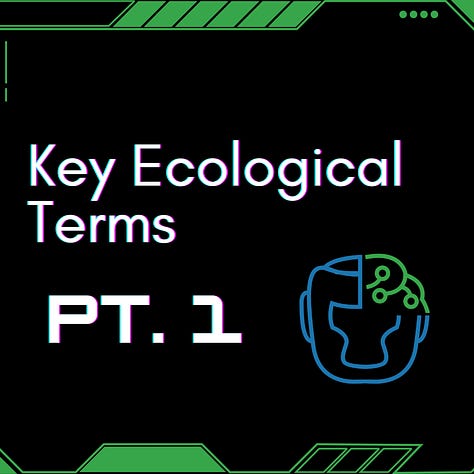
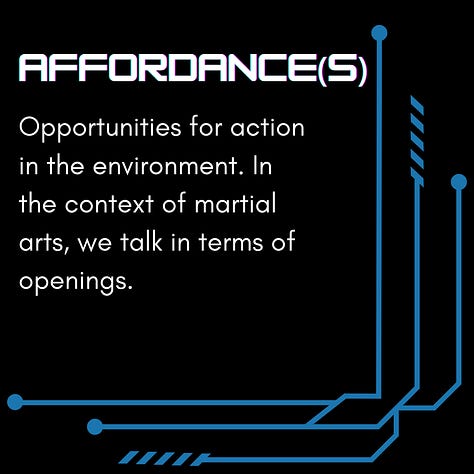
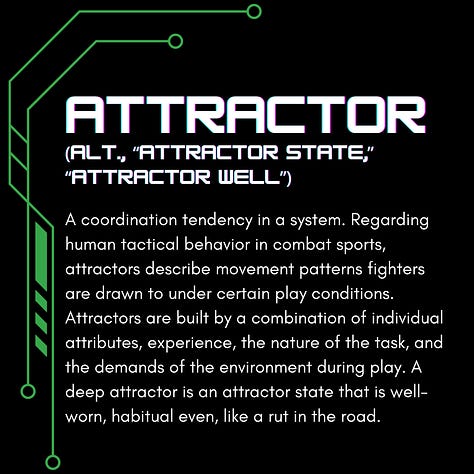
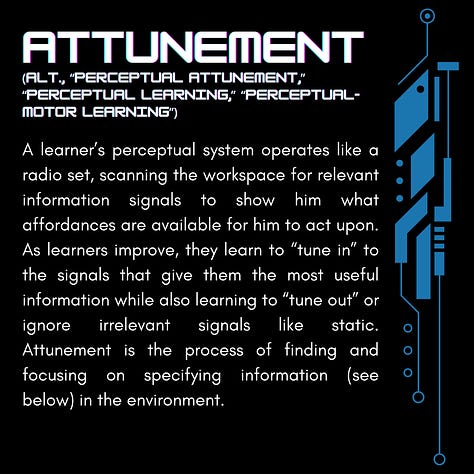
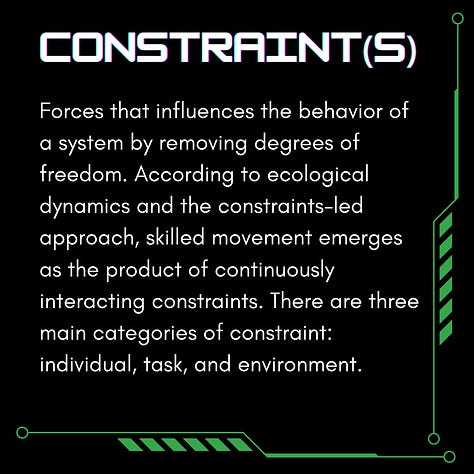


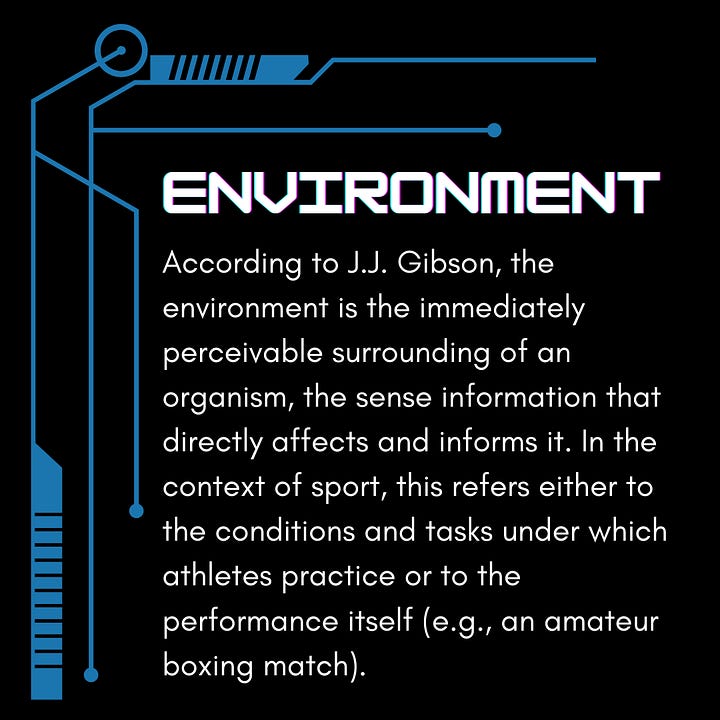
Invariant. (Also, “invariant feature(s)”, “visual invariant”). [In ecological psychology] a visual feature that remains consistent enough, aiding in the identification of objects from multiple angles. [In dynamical systems theory] a feature of the system that remains constant. Note to eco people: stop fussing over this, please.
Linear vs nonlinear approaches to learning. Linear pedagogies hold that a certain number of training inputs will yield a predictable quantity and quality of performance outputs. Nonlinear pedagogies recognize that this relationship is not linear: the learning system is complex, affected by many internal and external factors, and thus there is no straightforward relationship between quantity of training and quantity (and quality) of performance outcomes.
Perception-action coupling. (Alt., “information-movement coupling,” “direct perception,” “prospective control”). The idea that movements are directly paired to what an organism perceives in the environment. Perception drives action but actions create perceptions; it is reciprocal and nonlinear in nature.
Representative. (Alt., “representative learning design,” “representativeness”). The degree to which a practice environment contains or matches the conditions of the performance environment.
Self-organization. (Alt., “emergent organization”). Self-organized movement is produced by the lower-level units acting upon information immediately available to them rather than top-down direction from a boss (a “central executor” somewhere in the brain). Movement is thought to be produced like a flock of birds coordinating in flight. Each bird (sensory organs, limbs) can sense the movements next to it, specifying when to move. The central nervous system is still a key part of movement production; it’s just not thought of as a central executor that calls the shots, as it has been traditionally.
Specifying information. Specifying information refers to relevant information signals in the environment that a learner can use to regulate his movements for the purpose of successfully achieving a task goal. This is closely related to perception-action coupling, affordances, and attunement.
Variability. (Alt., “noise,” “stochasticity,” “stochastic resonance”). Variability is a critical and all-pervasive concept and principle in ecological training design for perception, skill development, adaptability, and injury prevention. [Regarding practice conditions:] unpredictable changes in the environment. [Regarding session design:] a variety of tasks, problems, and activity types for learning. [Regarding movement:] the body’s ability to achieve the same outcomes in slightly different ways, roughly synonymous with degeneracy and known specifically as functional variability.
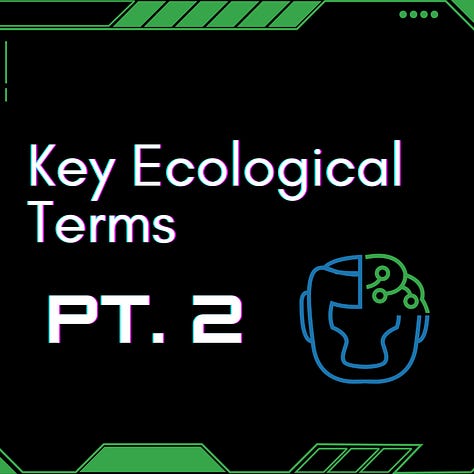
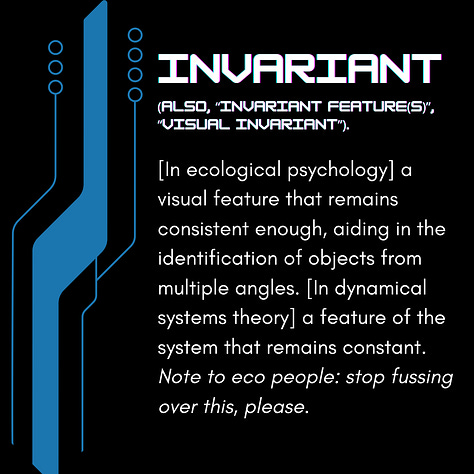




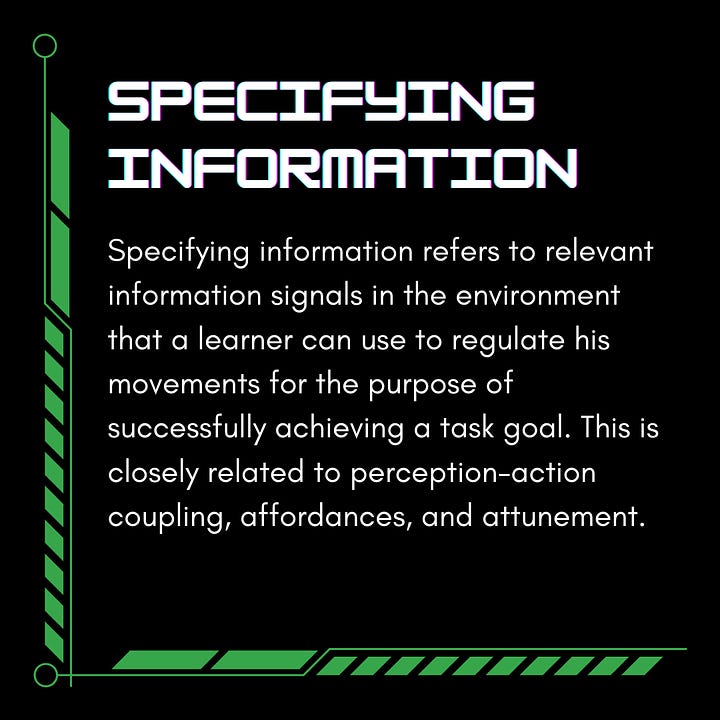

Bonus: Common Skill Acquisition Terms
Attentional focus. (Alt., “focus of attention,” “guiding attention,” “directing attention”). As the phrase suggests, this refers to the place where your attentional resources are directed. Broadly, one’s attention can be directed internally (i.e., on one’s body and how it is moving) or externally (on outside objects, analogies).
Closed vs open skills. Closed skills are performed in predictable environments, with little or no change during an activity. Open skills are performed in unpredictable, unstable, changing environments. Kata or forms are an example of a closed skill activity, whereas sparring and fighting are very firmly open skills.
Ecological validity. A common science term, not a category created by EcD people to invalidate other literatures. Research is more ecologically valid if it was conducted in the performance environment as opposed to lab conditions.
Motor control. (a) The act or process of controlling one’s movements. (b) The study of one’s ability control and improve control of one’s movements.
Motor learning. (a) A relatively permanent improvement in skilled movement associated with practice, training, and/or experience. (b) The study of the processes that underly the acquisition of motor skills.
Performance vs. learning. (Alt., the “performance/learning paradox”). Immediate improvements or decrements in performance do not necessarily translate to a relatively permanent change in one’s capability for skilled movement (learning). These gains are usually motor adaptations, which are not necessarily evidence of motor learning.
Transfer of learning. Transfer is a phenomenon whereby skilled movement is influenced positively or negatively under novel conditions based on previous practice or experience. Ultimately, coaches want the skills they observe emerging in the practice environment to show up just as strongly in the performance environment., i.e. positive transfer.
This is a living document. If there’s a term you don’t know that you hear a lot—and you think it’s a good candidate—comment on this post, send me a message, or shoot an email.

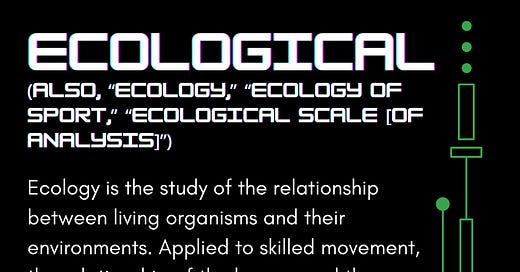




Rob Gray used some terms like 'Attractor', 'Deep Attractor', 'Attractor Well' and a couple more variants of the term in HWLTM. He also went into phase when discussing motor coordination. Some content on that would be welcome.
This is so helpful. I’ve been trying to make something like this myself but have struggling to define many of these terms correctly. I understand many of them but defining them on paper can be difficult. Thank you!